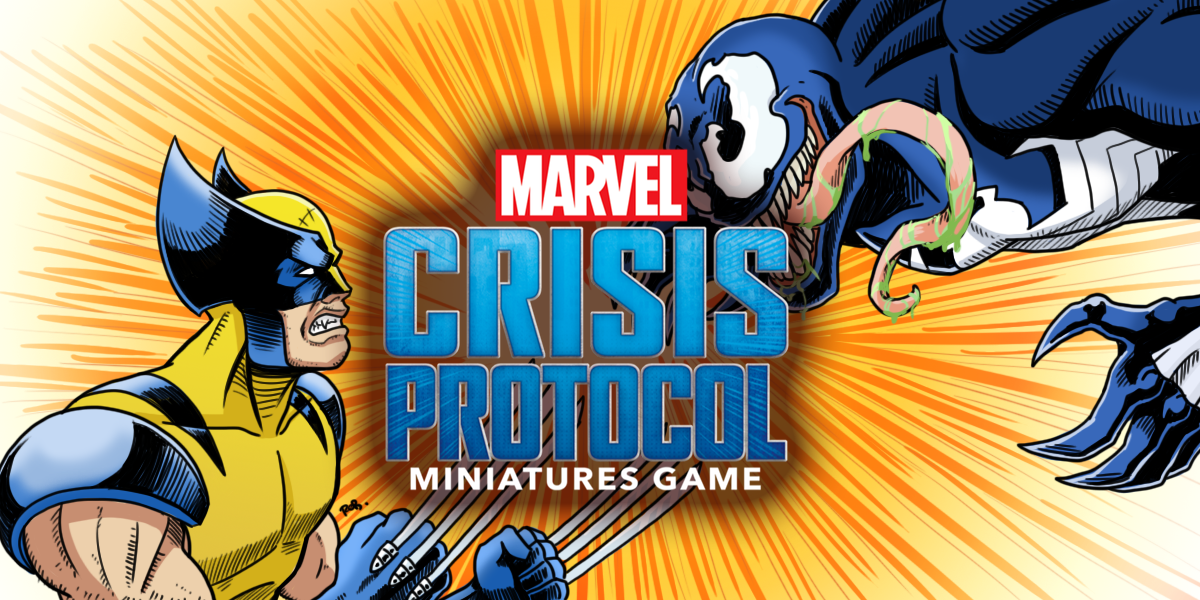In this series for newer or casual players we introduce the various Affiliations in Marvel Crisis Protocol, dip into their comic book history, and talk about building a roster around them. This week we travel to the hidden nation of Wakanda!
Updated 02/03/2022 to revise Okoye based on the November 2021 Updates. No changes to Black Panther or Shuri needed.
In the past Wakanda has been one of the dominant affiliations in Marvel Crisis Protocol, both on in-person and virtual tables. But they the first affiliation released after the core box – do they still stand up against everyone who has come along since then?
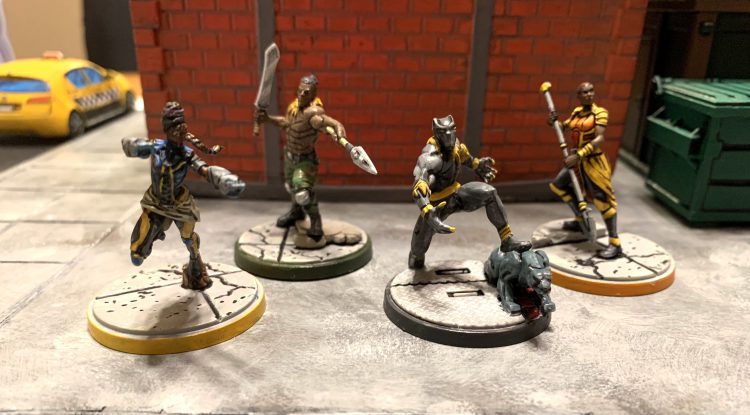
Background
Black Panther himself first appeared in Fantastic Four #54 in 1966. He guest-starred in various books, mostly FF, Captain America, and Avengers before becoming the lead feature in the oh-so-very-1970s-named series Jungle Action and eventually getting his own series in the late 1970s. But it wasn’t until the 1990s that T’Challa’s popularity really gained traction and it never looked back.
The backstory of the Wakandan characters in the Black Panther film doesn’t stray too far from the comics. T’Challa is the hereditary ruler of the hidden super-science nation of Wakanda, which gets its wealth and technology from a huge mound of vibranium there. He gained superhuman abilities from a mystical heart-shaped herb. He had a relationship with Ororo Monroe aka Storm and the pair eventually married. His sister Shuri became the Black Panther and ruler of Wakanda for a time when T’Challa had been wounded and led a disastrous war against Atlantis. The Black Panther’s personal guard (and brides-in-waiting) are the Dora Milaje – in the comics both Okoye and Nakia are Dora Milaje but Nakia kind of went crazy after being manipulated by Mephisto and became a villain. As one does. Speaking of villains, Erik Killmonger (his actual name in the comics, not just an alias! Big “Moooooom! I told you not to call me Erik in front of the Wakandans! It’s ‘Killmonger!’ energy) was a mercenary who was originally from Wakanda but not of the royal line, and he did take over the nation for a time.
Black Panther and Wakanda as a whole have become very inspirational to a lot of people (even before the movie, but that definitely raised the profile). Stan Lee wasn’t looking to make a big political statement when he created the character, he just thought there should be Black superheroes. Panther is incredibly smart, strong, and capable, and he stands equal to the Avengers and Fantastic Four. Wakanda itself is the most advanced nation on the planet and maintains pan-African cultural and fashion notes rather than being whitewashed. That’s a powerful representational message, especially considering superhero comics and movies haven’t always done a great job (see DC’s hidden advanced African nation…of gorillas. Yikes!).
Recommended Reading
Panther’s Rage (Jungle Action #6-18 ) Black Panther’s first real solo series starting in 1973, rather than him being a guest star in other books. This run is set in Wakanda and throughout Africa, really the first opportunity to build the Black Panther mythology. Also the first appearance of Erik Killmonger.
Panther’s Quest (Marvel Comics Presents vol. 1 #13-37) T’Challa hunts for his mother in this epic story from the 80s. Twenty-five chapters!
The Client/Enemy of the State (Black Panther vol. 3 (1998) #1-12) I only say #1-12 here but really, go read all 62 issues of the series and the 7 issues of The Crew that come after it. This is Christopher Priest’s series, and it’s honestly my favorite comics run ever. So many of the elements from the film were introduced here (including Okoye and the Dora Milaje), the global politics are smart as hell, it’s really funny in parts. Priest’s non-linear storytelling can take some getting used to if you are hitting it for the first time but it’s well written and really worth it.
A Nation Under Our Feet (Black Panther vol 5 (2016) #1-12) This is the start of the phenomenal Ta-Nahisi Coates run on Black Panther. It kicks off by exploring the issue of whether a hereditary monarchy is really the best form of government for the most advanced nation on Earth.
Wakanda in Marvel Crisis Protocol
Wakanda has a small but versatile roster, able to handle whatever you throw at it. They lean more toward taking objectives and moving your opponent off them than they do beating your enemies into the ground.
Leadership
Black Panther’s King of Wakanda leadership ability lets allies spend 1 Power to reroll a die in an attack, defense, or dodge pool. There’s no “once per turn” limit, only the limit of how much power you have. Like I said, incredibly versatile. Grade: A-
Team Tactics
Usurp the Throne is almost required if you’re bringing Killmonger. Pick the highest Threat value enemy, gain two bonus dice to attacks, and get 2VP if you Daze or KO that character this round. Combine this with Wakanda Forever to get a third attack and have Killmonger go late in the round to finish the target off, and boom you’re 2VP closer to winning. Grade: A-
Either Black Panther or Shuri can play Vibranium Shielding. This gives allied characters within a range equal to the Power spent the “reduce wounds from enemy effects by 1 to a minimum of 1” superpower for the whole round. Very potent for making sure nobody gets Dazed or KO’d on a crucial round. Grade: A-
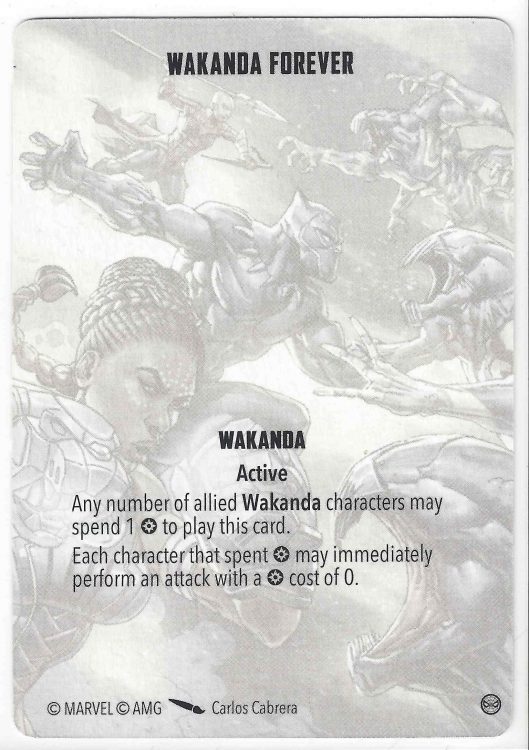
Wakanda Forever is the real gold of the affiliation’s Team Tactics cards. Allied Wakanda characters can spend 1 Power to immediately make an attack that costs 0 Power. Extra attacks, especially out of activation, are great, no two ways about it. Grade: A
Building Your Roster
Wakanda
Black Panther is really the gold standard for affiliation leaders. He’s got good offense, solid defense, Long move plus a way of getting even more movement, the ability to push enemies around, copious rerolls, and he’s only 4 Threat. A real utility player able to do whatever you need. He’s going to be pretty Power hungry though if you want him to use all those abilities. Grade: A

Killmonger, as his name would suggest, is a combat machine. With his Focused on the Kill superpower you want to be doing multiple attack actions against the same foe, so his Charge will help him get there without burning an action to move. Killmonger can get rerolls and can decide to use Blocks as Hits if his roll comes up crap, and can change the defender’s successes to blanks, so when he gets onto an enemy (especially if it’s his second attack and he’s making a Black Ops Strike using Usurp for 11 dice) it’s going to sting. On the down side, Killmonger is 4 Threat but feels like that was between 3 and 4 and got rounded up. Other than the affiliation reroll he doesn’t have much in the way of defense though, so maybe keep Okoye nearby. Grade: B+
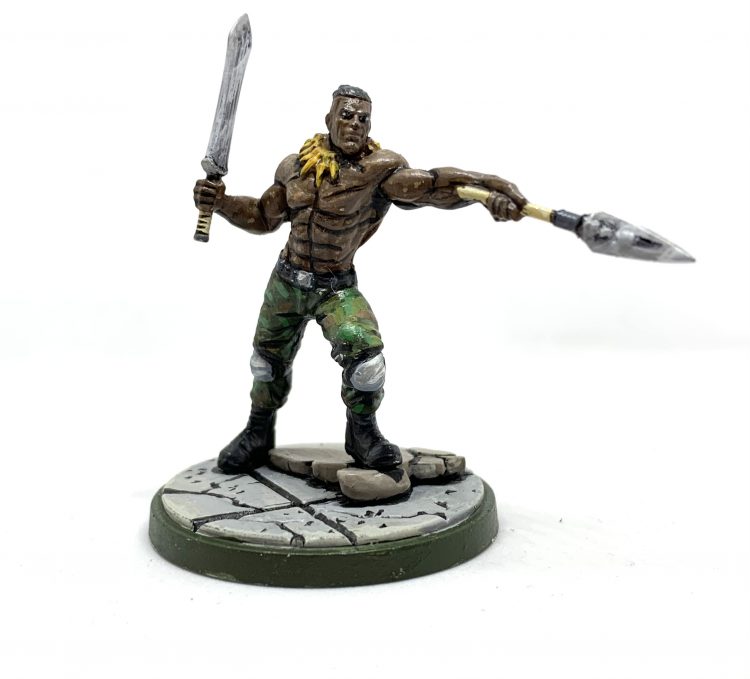
And Okoye is, as we’ve well established, the squishy character’s best friend. She’s 2 Threat so great to fit into nearly any roster. She’s a cheap bodyguard, but Okoye herself only has average defensive stats and doesn’t have that many wounds. She gets a free reroll on defensive rolls in addition to the one for the affiliation, so you can crit fish to try to get more mileage out of her 3 defensive dice but one big attack pool is going to do her in if you’re not careful. Grade: A-
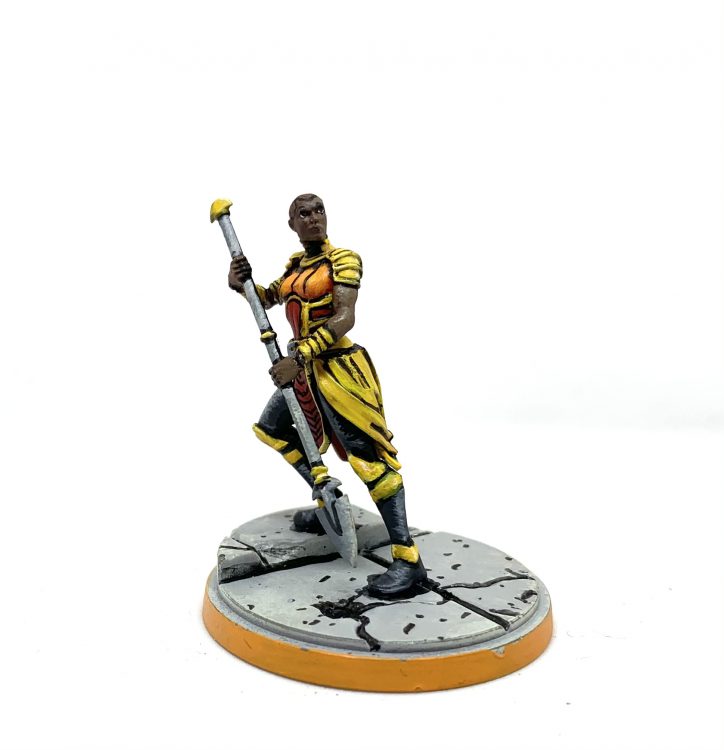
Shuri is another ubiquitous character for her outstanding board control ability and because she can hand out rerolls. Be careful though because her builder only gives her 1 Power (plus maybe 1 more for Head of Wakanda R&D each time you pick up the dice, which may help but isn’t reliable) so those rerolls can’t flow like water. Try to keep her at Range 5 from enemies where not too many can touch her back; distance pretty much her only defense unless you’re using Vibranium Shielding this round. Grade: A-
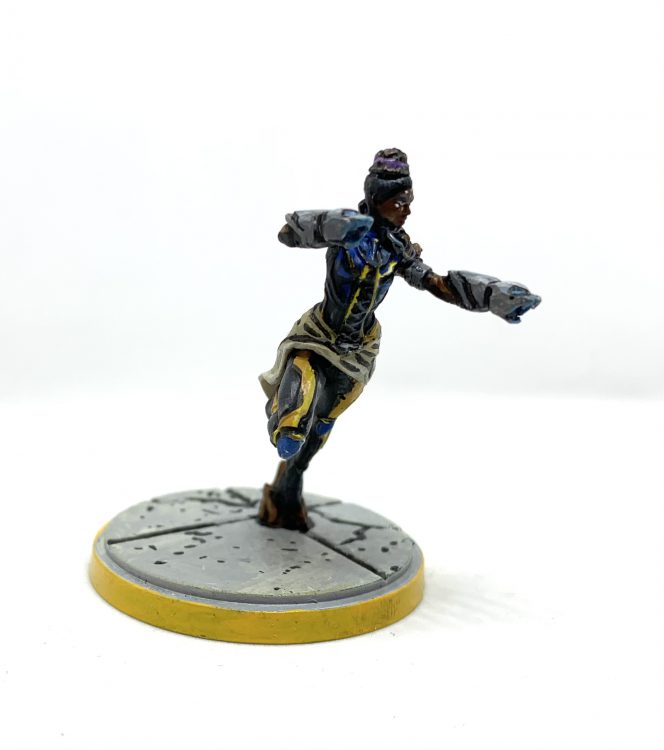
Storm’s best ability is her X-Men leadership which she doesn’t get to use here. Beyond that her attacks aren’t great – they can be boosted with Eye of the Storm but that’s pretty costly. Storm is the only in-affiliation character who has a throw but that’s limited to Size 2. So overall she’s not bringing much that’s very helpful to the table sadly. Grade: C (outside of X-Men)
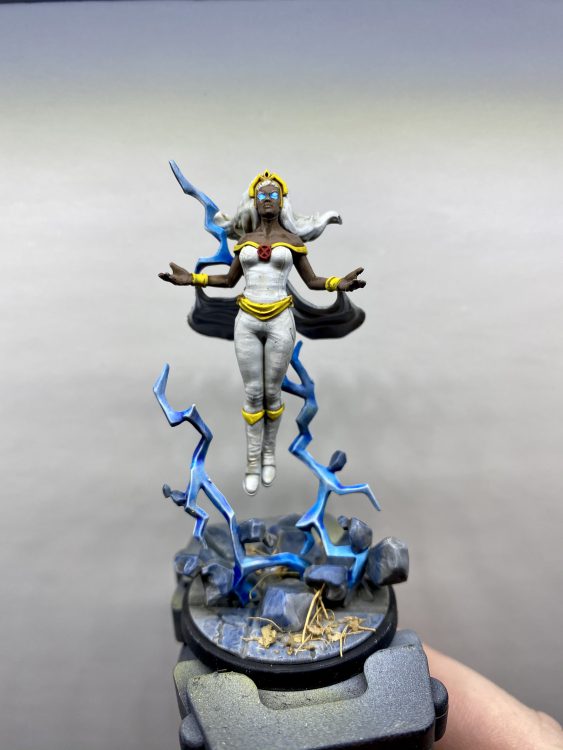
And Friends
Who to add into a Wakanda roster? Well, pretty much anybody. Since they cover most bases in a strong generalist way you can add in characters to lean toward dishing out damage (Valkyrie, Magneto, Wolverine, Hawkeye) or board/objective control (Enchantress, Loki, Medusa), mobility (Miles, Zemo, Black Widow) or just tankiness (Taskmaster, Luke Cage, Kingpin). Your core three Wakandans can cost as little as 9 Threat (or 13 for four of them) so you have room to add in some Threat-heavy allies.
If you want to go for a dual affiliation roster your overlaps are with Avengers (Black Panther) and Cabal or Criminal Syndicate (Killmonger). The most bang for your buck is with Shuri and Okoye (and Storm I guess) crossing into A-Force. And really, what affiliation doesn’t like having Shuri and Okoye along?
So Are They Any Good?
Yeah, they really are. Being older they don’t have that new affiliation smell so they may not be showing up as much in leagues and tournaments, but they’re usually there at the final tables. At the end of the day the Wakandans can cover almost any crisis and adapt to nearly any playstyle. They’re not as straightforward as Avengers or Asgard as they have a lot of moving parts, but not as high a skill ceiling as maybe Criminal Syndicate. Play them, get in a lot of reps, and they will reward you.
Have any questions or feedback? Drop us a note below or email us at contact@goonhammer.com.
